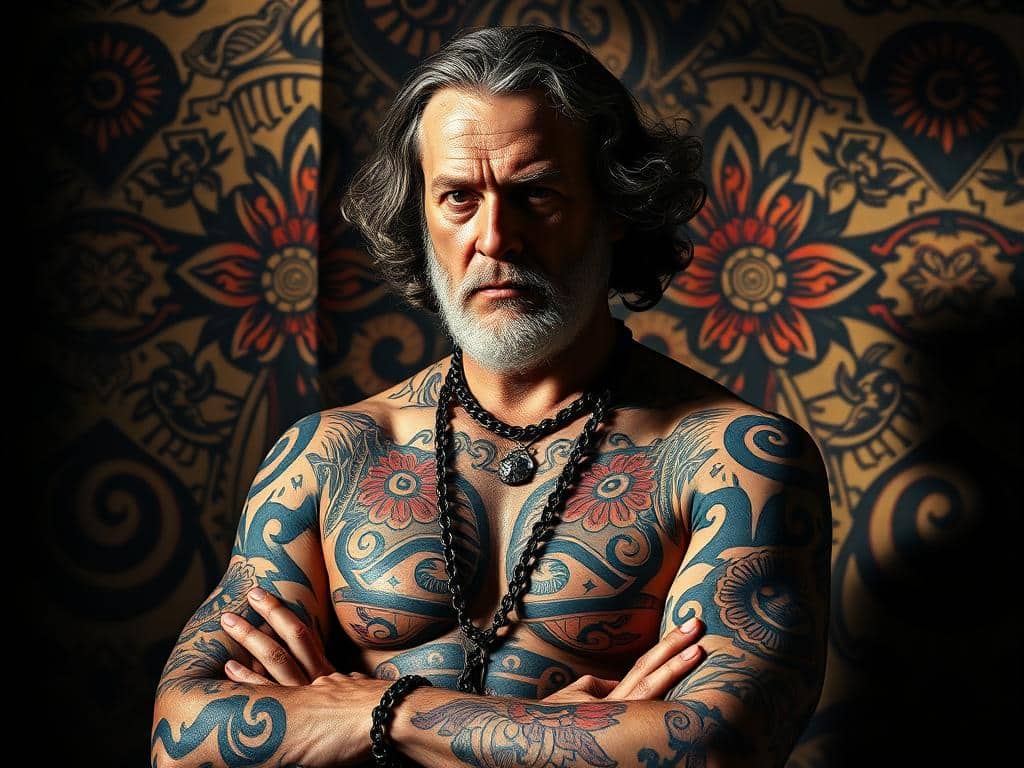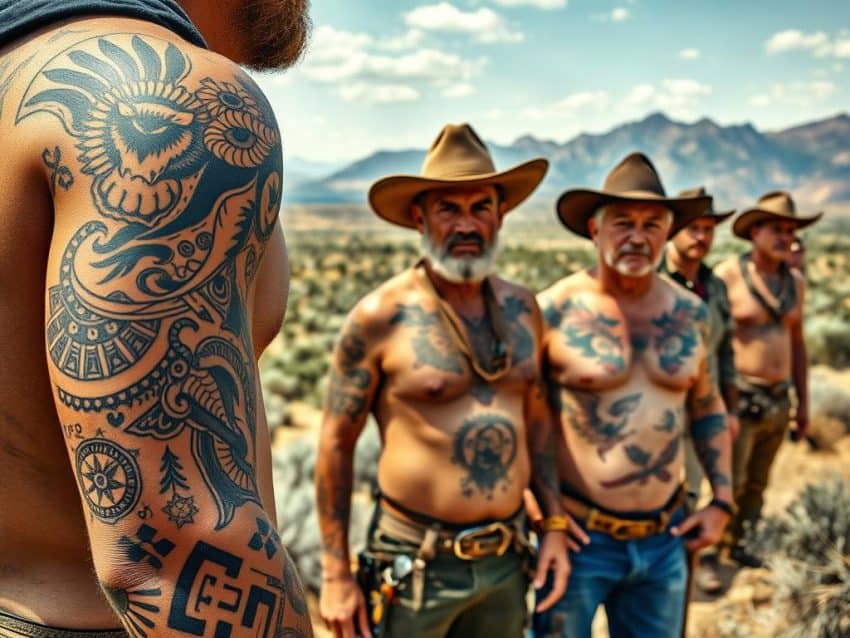My first experience with tattoos left a lasting impression. It was the stories and designs that really caught my attention. Tattoos have long been symbols of identity, rebellion, and beauty across cultures.
They reflect the changes in society and personal growth. The earliest tattoos date back to 12,000 BC in Egypt. Workers wore symbols of endurance and skill on their skin.
This connection is felt by many today. Western tattoos have shaped stories of belonging and defiance. Let’s dive into the rich history of tattoos in Europe and see how ink has influenced our society.
Key Takeaways
- The earliest recorded tattoos date back to 12,000 BC in Egypt, reflecting cultural significance in ancient societies.
- Romans adopted tattooing for marking criminals and slaves, showing tattoos as a tool of identification.
- The ancient Greeks used tattoos for communication among spies, highlighting their strategic value.
- By the 18th century, tattoos were seen as linked to crime. But they experienced a comeback in the 20th century.
- Today, about 30% of Americans proudly show off at least one tattoo, marking a big cultural shift towards acceptance.
- Military personnel have long seen tattoos as symbols of loyalty and sacrifice, changing public views.
- Tattoo conventions and artists have made tattoos a respected art form in today’s society.
The Roots of Tattoos in Western History
Tattoos have fascinated people for thousands of years. They are more than just body art; they carry deep cultural significance. Through tattoo history, we see how tattoos have changed, telling us about human societies.
Ancient Origins and Early Practices
The history of tattoos goes back to ancient times. Ötzi the Iceman, from around 3250 BCE, is the oldest known tattooed mummy. He had 61 tattoos believed to have healing powers.
In Egypt, mummies from 3351 to 3017 BCE show figurative tattoos. These discoveries show how tattoos were used for health, spirituality, and art.
Influence of European Cultures
European cultures played a big role in tattooing’s evolution. Tattooing tools from the Austronesian culture date back before 1500 BCE. This shows early influences on tattooing.
Groups like the Ainu people of Japan and Berber women of North Africa had their own tattooing traditions. In ancient China, tattoos were a sign of criminal punishment. This shows how tattoos were viewed differently over time.
Indigenous Tattoo Traditions
In North America, Indigenous peoples have a rich tattoo tradition. The oldest tattooed Inuk woman was found on St. Lawrence Island, dating to the 16th century. Tattoos among tribes like the Osage marked achievements and were tied to identity.
Tattoos were a rite of passage, often for women. They show the cultural significance in these communities. Each tattoo tells a story, connecting people to their heritage and beliefs.
Tattoos in Western History: The Modern Era’s Influence
Captain James Cook’s voyages in the 18th century changed tattoo culture. He introduced Western society to Pacific influences. This led to tattoos becoming more popular, thanks to his encounters.
The term “tattoo” comes from the Tahitian word “tatau.” Cook’s journeys sparked a new interest in body art. Sailors and society began to see tattoos in a new light.
The James Cook Effect
James Cook’s explorations sparked a fascination with tattoos in Great Britain. He brought back stories of indigenous peoples with tattoos. This sparked a trend, with sailors getting tattoos to show their adventures.
Cook’s journeys opened up a new view of tattoos. They became symbols of honor and identity, not just markings.
Sailors and the Spread of Tattoo Culture
Sailors were key in spreading tattoo culture. By 1925, about 90% of U.S. Navy sailors had tattoos. They shared their stories, embedding tattoos in popular culture.
This trend evolved from simple symbols to elaborate designs. Tattoos captured the adventurous spirit of those who wore them.
From Rebellion to Acceptance
At first, tattoos were seen as rebellious, for sailors and outcasts. But views changed over time. By the late 20th century, tattoos were accepted and seen as a way to express oneself.
In the military, tattoos show pride in service and unit identity. Changes in military rules have allowed tattoos to mean different things. Tattoos now show the evolution of attitudes toward body art.

Conclusion
Tattoos in Western history are more than just body art. They have evolved from ancient rituals to a modern art form. This change shows how tattoos have become a way to express personal identity and culture.
From ancient Egypt to today, tattoos have seen many changes. Captain Cook introduced the term “tattoo” in 1769. Celebrities have also played a big role in making tattoos more accepted.
Each era has brought its own style to tattoos. Sailors and circuses of the past have influenced today’s tattoos. People use tattoos to tell their own stories and show their values.
Today, tattoo culture is full of life and complexity. It’s about more than just art; it’s about culture and identity. As tattoos continue to evolve, we’ll see new ways of expressing ourselves through this art.
